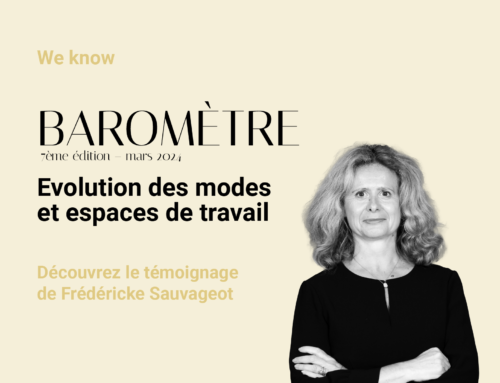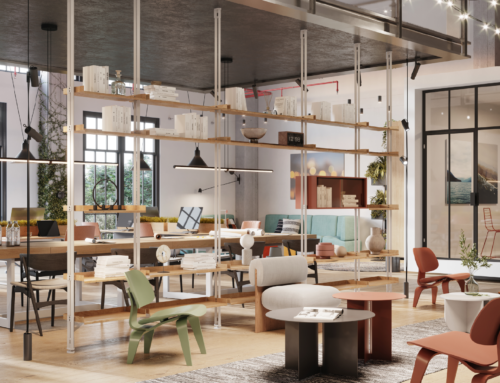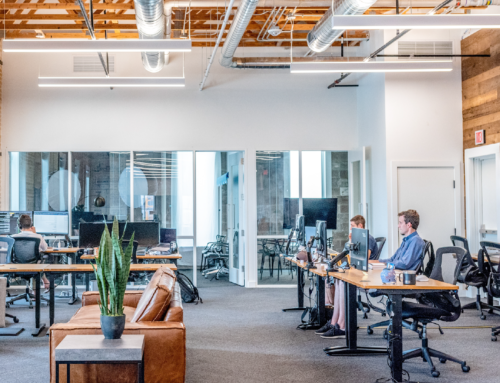New ways of working:
What impact does this have on your real estate strategy?
What impact does this have on your real estate strategy?
For nearly three years, the world of work has been undergoing structural changes and so have real estate strategies. To adapt, companies have gone through three phases:
- The reaction -offices were emptied for a mass forced departure to telework. Most companies reacted as best they could, setting up new work organizations to maintain the collective and performance.
- The quest -companies then went looking for the right model to organize work differently. By offering the same working conditions in the office as at home. But also by learning to collaborate and interact in hybrid mode. At this point, the existence of the office was questioned.
- Sustainability - today, companies are looking for their balance and adapting their environment to their working methods. At the same time, the needs and expectations of employees have evolved. The place of the office is no longer to be proven, it remains the reference and the anchor. As revealed in our barometer on new work modes and spaces carried out with CSA Research, 71%* of employees do not see the future without a physical office and only 8%* of managers are struggling to get employees to return to the office.
On the other hand, the office as we knew it no longer works. 87%* of employees believe that telecommuting requires a rethinking of workspace layouts to better suit their current work organization and methods. Why? Because 70%* of service sector employees telework on average 2 days a week. They no longer come to the office for the same reasons.
What are these new motivations? What are the impacts on real estate strategies?
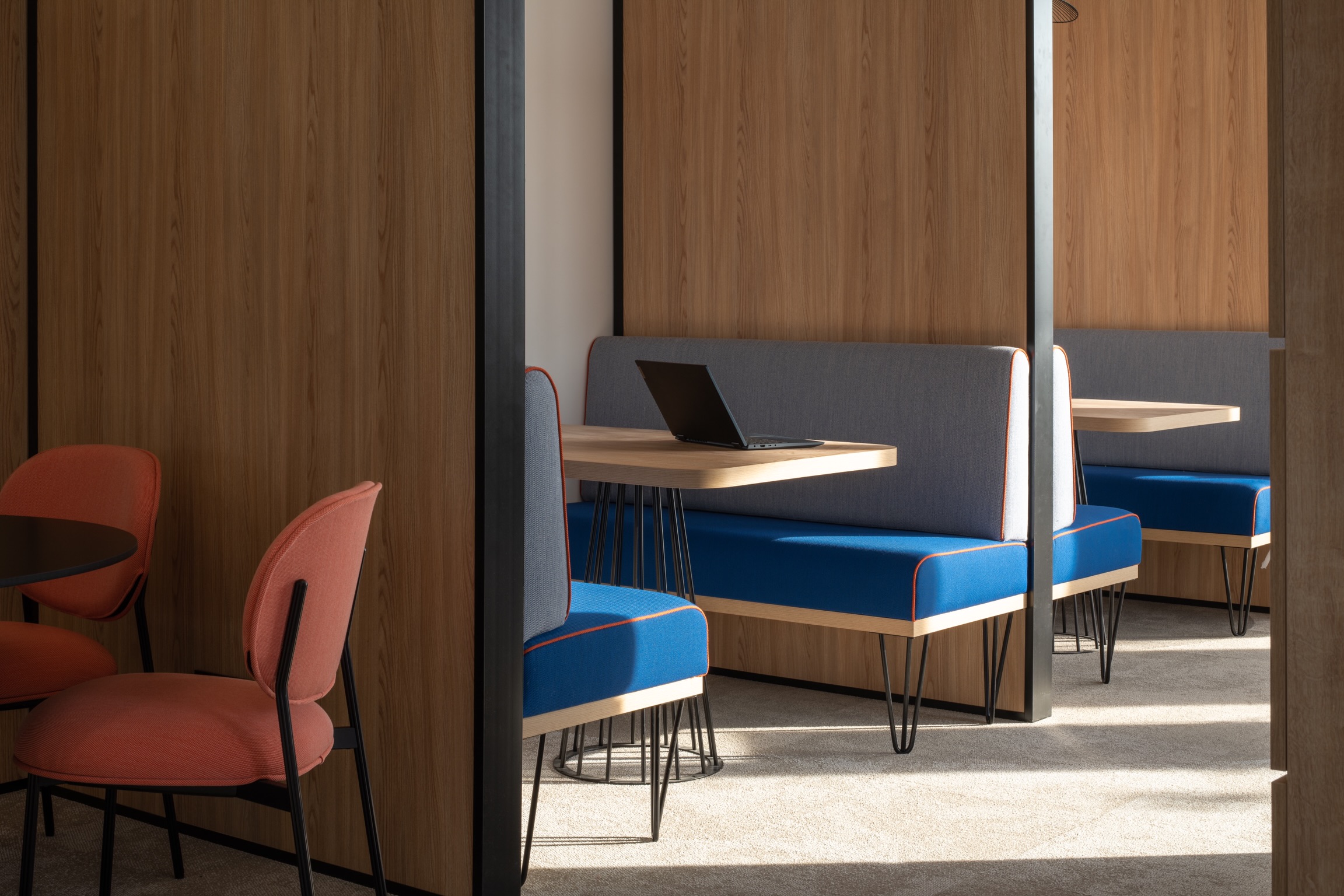
Thibaud Poirier for Parella
Changing employee expectations
In addition to working methods, we can see that the expectations, needs and aspirations of employees have changed. If they have an impact on real estate strategies, what does this mean in concrete terms?
Collaboration and social link, the key words in employees' expectations.
According to our barometer, 75% of employees surveyed say they like coming to the office. Thus, 60% of them come to work, exchange and have the presence of their colleagues and 30% for the atmosphere!
Employees need to get together. This can be done in different ways depending on the company: formal exchanges, brainstorming or informal time. The challenge is to find the right combination of spaces to meet the company's challenges and culture. It is not enough to put a table soccer in the middle of the spaces!
Come to the office yes, but to be better than at home!
82% of employees want to be better than at home. Equipment at the workstation, services, thermal comfort (air conditioning and heating)... everything must be optimal to avoid the "if it's like this I'll stay at home" attitude.
Towards an increasingly flexible organization.
Today, 30%* of companies have switched to flex-office (the fact of not having an assigned position). And 77%* of the employees concerned appreciate the freedom it offers. Autonomy and flexibility orchestrate the organization of work and associated spaces.
Even if the term "flex-office" has entered the common language and has become more democratic, the need for support for employees should not be underestimated: from the management team to the employees. Parella helps its clients to build and appropriate spaces before, during and after their transition to flex-office, via several activities: co-construction workshops, webinars, feedback, post-move adjustments...
A reinforced requirement on the working environment.
As for the key criteria relating to the premises, employees place their location first, followed by the layout of the spaces. 71% of the employees surveyed* consider the work environment as a decisive factor in their choice of a company or in their loyalty to it.
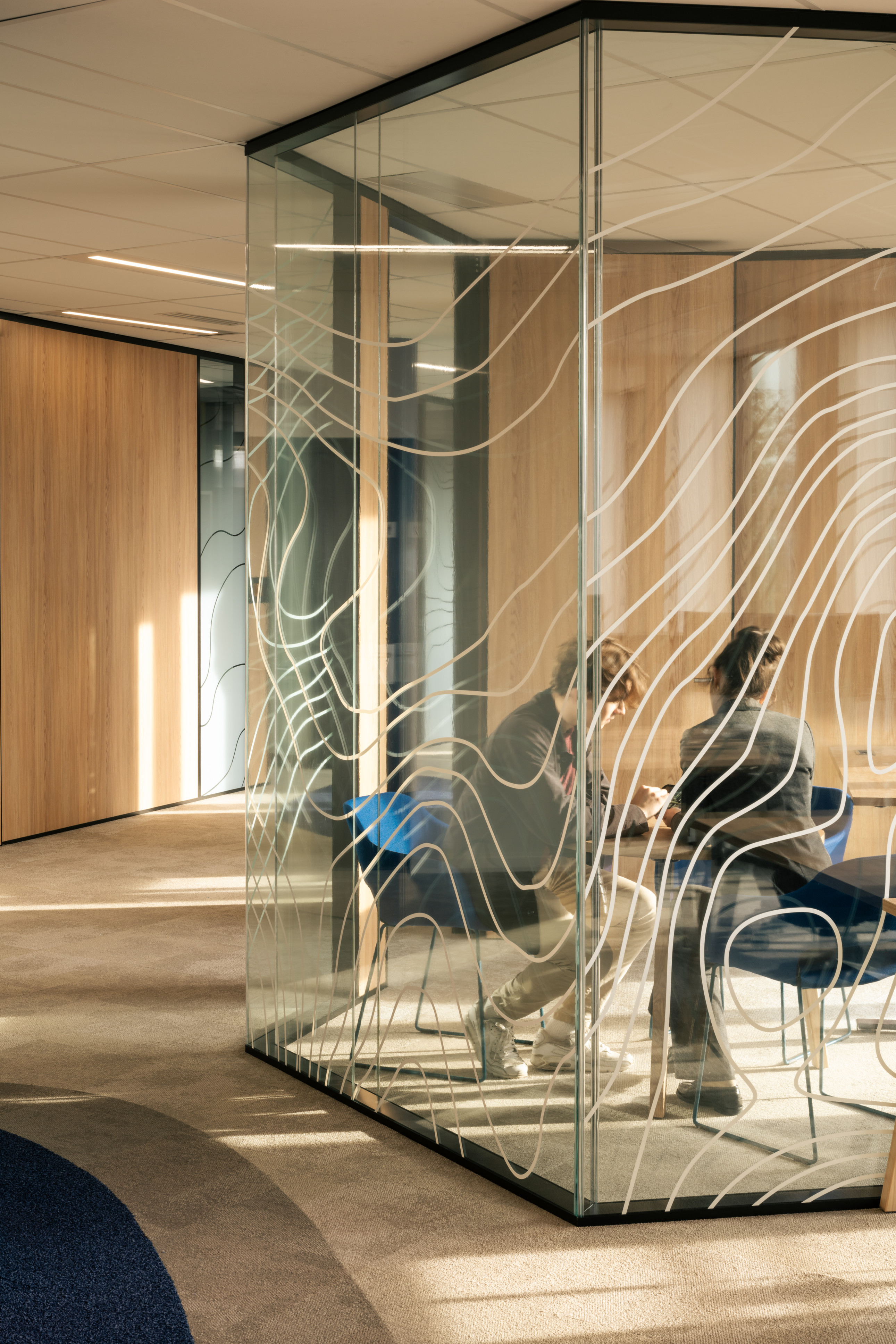
Thibaud Poirier for Parella
In concrete terms, what are the consequences
on your real estate strategies?
on your real estate strategies?
Each organization can activate one or more levers depending on its legal, organizational, financial and cultural constraints. At the beginning of 2023, the underlying trends are as follows:
A decrease in surface areas in the IDF
Some companies take advantage of their move to go into flex-office. Others decide to postpone this decision until later, "when the growth will be there". One thing is certain: most business leaders are now asking themselves the question of flex-office.
In 2022, Parella supported the companies Butagaz and Sextant Expertise, which decided to move to a flex-office. This enabled them to give back nearly half of their surface areas.
To accurately measure the impact of this decrease in m², a number of parameters must be taken into account. If the number of workstations decreases, collaborative spaces dedicated to formal and informal exchanges should not be neglected. If employees come to the office, it is to see each other.
A desire for centrality
The budgetary pressure on companies is nowadays strong for a majority of them. However, the optimization of space allows many to "afford the luxury" of improving their location and the accessibility of their offices. Also, this arbitration is often motivated by the desire to retain talent in a more demanding working world. As well as the desire to offer a nice showcase to their clients.
Most of the demand for office space has been in "central" areas. For example, in 2022, Paris will account for 47%** of the volume placed in Île-de-France, compared with 38% in 2019**.
An increased need for agility
COVID has undeniably shaken the certainties of some and others about the future. More and more General Management teams are putting flexibility at the heart of their thinking, notably through :
- Firm lease terms reduced: We are currently assisting a client in a search for 10,000 sq.m. under a firm 6-year lease, whereas traditionally 9-year firm leases were used for this space segment.
- Maximized sublease clauses: More permissive subleasing up to sometimes 90% allowed to outside companies.
Some managers are also ready to pay for almost total flexibility by freeing themselves from traditional 3/6/9 year leases. For this, they movetowards operated offices or coworking spaces.
A different distribution of work budgets
Office buildings must be able to accommodate the "new" uses of employees. Among other things, they require more meeting spaces. This creates greater technical constraints, particularly in terms of air renewal. There is a strong interest from users for new or restructured assets, also motivated by their ambitions in terms of energy savings.
The allocation of the furniture budget also evolves to equip formal or informal meeting spaces, to create more qualitative convivial spaces or to install lockers, a key and indispensable element of a transition to flex-office.
However, it has been observed that a move to flex-office in the context of premises already fitted out as open spaces can be done in an optimized way by relying on the existing, while creating new spaces necessary for its proper functioning. Following the example of the Rocher Group, which we recently assisted in moving all of its Parisian teams to flex-office and thus welcoming its Petit Bateau brand to its headquarters in Issy Les Moulineaux.
New questions related to services and operations
A first question quickly arises when defining the needs: what services should be offered to employees who only come on site 2 or 3 days a week?
There are two opposing schools of thought: those who want a full service building, to delight employees and make them want to come more and more, versus those who think that telecommuting calls for a completely different use of services, since employees will favor the dry cleaner or the gym near their home.
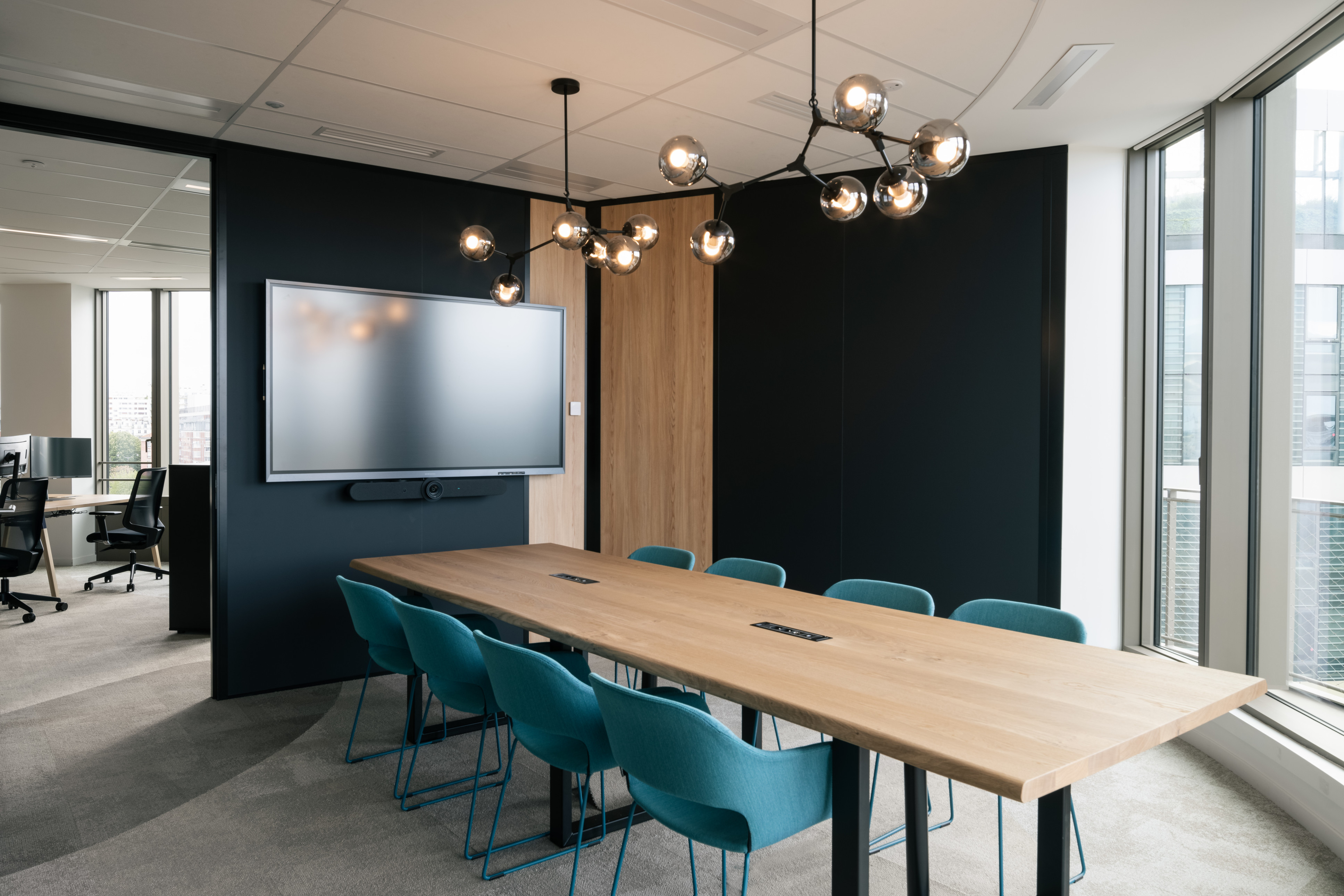
Thibaud Poirier for Parella
Today, we collectively lack the hindsight to support one or the other of these visions.
After moving in, a second issue is quickly addressed: the premises are often empty on certain days, especially on Fridays. In order to optimize and save energy, some organizations decide to close all or part of their premises, like the Rémy Cointreau group, which we accompanied for its move to the Etoile Saint Honoré Business Center in 2022.
In conclusion
Practices are evolving and their impact on corporate real estate strategies, in the medium and long term, is becoming increasingly obvious. While certain basic trends can be observed, each company must consider them in the light of its own issues and problems.
These developments have also opened up the field of possibilities. Work on occupied sites used to be a repulsive scenario. Today, it is easier to telecommute employees, to rent coworking spaces during a noisy construction phase, or to take advantage of excess space to create buffer zones and manage the work more easily. Like a company in the industry sector that has cut the duration of its work by half by offering its employees to telework 100% of the time for 2 months.
In 2022, Parella accompanied as many moving projects as renegotiation projects. What will be the trends in 2023? A Parella expert will be able to accompany you and advise you in identifying the best solutions according to your issues.
Each situation has its own real estate strategy
Your issues and your context are unique. We offer you a discussion to help you in your reflections.
Sources
* The figures mentioned in this article come from the CSA X Parella 2022 barometer on work spaces and work styles.
** Immostat/Parella

